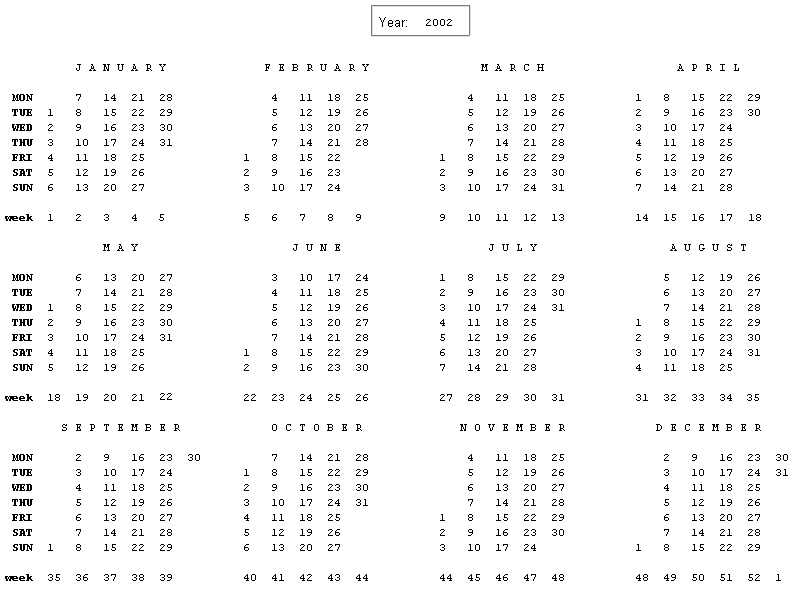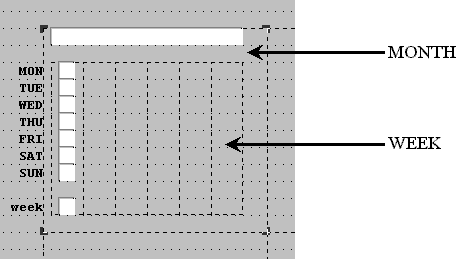
Many years ago I wrote a simple COBOL program which would print a calendar showing all the dates within a particular year so I could quickly identify on which day of the week each date fell. The printed output looked like the following:-

I later decided to try and code it in Uniface just to see how easy (or difficult) it was. Due to the fact that Uniface contains some very nifty date functions it was surprisingly simple. My COBOL version was more complicated as I had to create my own set of date manipulation routines.
The structure of the CALENDAR form is as follows:-

After a YEAR number has been entered the code which fills the structure with data looks something like this:
entry BUILD_CALENDAR
params
numeric pi_Year : IN
endparams
variables
date lv_Date
numeric lv_Year, lv_Month, lv_Day
numeric lv_DayOfWeek
endvariables
call CREATE_MONTHS ; insert name of each month
lv_Date = $date("01/01/%%pi_Year") ; get first day of the year
lv_Year = year.dummy
setocc "month",1 ; start at month 1
setocc "week",1 ; start at week 1
while (lv_Year = pi_Year)
lv_Day = lv_Date[D] ; extract day
lv_DayOfWeek = lv_Date[A] ; extract day-of-week
week_no.week = lv_Date[W] ; extract week number
; set day number into day-of-week for current week
selectcase lv_DayOfWeek
case 1
monday.week = lv_Day
case 2
tuesday.week = lv_Day
case 3
wednesday.week = lv_Day
case 4
thursday.week = lv_Day
case 5
friday.week = lv_Day
case 6
saturday.week = lv_Day
case 7
sunday.week = lv_Day
endselectcase
; after day 7 increment to following week
if (lv_DayOfWeek = 7) creocc "week",-1
lv_Date = lv_Date + 1d ; increment date by 1 day
lv_Month = lv_Date[M] ; extract month
; check for change of month
if (lv_Month != $curocc(month))
setocc "month",lv_Month ; next month
setocc "week",1 ; start at week 1
lv_Year = lv_Date[Y] ; extract year
endif
endwhile
end ; BUILD_CALENDAR
The actual code which I use can be downloaded from here.
Tony Marston
1st June 2002
mailto:tony@tonymarston.net
mailto:TonyMarston@hotmail.com
http://www.tonymarston.net